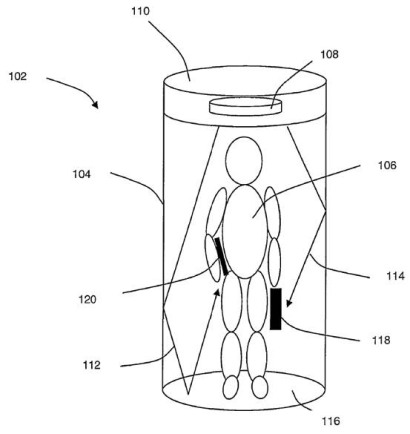GB Patent Number: 2474175
Granted to: Qinetiq
The high street and its retailers are facing growing challenges, as highlighted by the recent demise of companies such as Jessops, HMV and Blockbuster. For 'bricks and mortar' retailers in general, 'shrinkage' (more commonly known as shoplifting) is a major concern which is not faced to the same degree by 'click and order' retailers.
Based on the latest available figures for the UK, it is estimated that theft of retail products rose to nearly £4bn in 2011, as items disappear from shelves and rails. To counter this, electronic article surveillance (EAS) systems are deployed in many shops.
These systems check for the unauthorised removal of products by using tags which can be detected in surveillance zones at exits or checkout lanes. The tags use passive magnetic, microwave or radio frequency technologies, which trigger an alarm if they have not been removed or disabled prior to being taken out of a store.
These situations can be addressed by increasing the number of antennas used, but at an added cost to the system. Balanced with the need to reduce shrinkage, retailers are also very sensitive to the need to maintain a pleasant and welcoming shopping experience, without giving a shop the feeling of a high-security prison.
To assist in the battle to defend the high street, Qinetiq has developed improved security screening equipment for use in shops, for which GB patent number 2474175 was granted at the end of January.

In Qinetiq's system, a cylindrical glass or plastic chamber, much akin to a revolving door, is placed at the entrance to a retail establishment, at the top of which is located a single RFID antenna and reader. Interrogating radiation is generated by the antenna and propagates downwards into the chamber. Since the chamber is surrounded by an, albeit transparent, wall, the radiation is reflected about the chamber and from the floor and arrives at the occupant at a multitude of angles. This eliminates the possibility that the consumer will be able to shield the tag, therefore increasing the chances of successful detection.
In order to improve reflectivity, the chamber may be lined with a virtually invisible conductive mesh, either integrated within or applied to the walls.
Alternatively, an optically-transparent electrode material, such as half-silvering or indium tin oxide can be applied to the walls of the chamber. Since the walls are transparent, it is hoped that the chambers will not be claustrophobic and will help protect and prolong the life of our much-loved high street.





